
“Russian dinosaurs, like snakes in Ireland, are remarkable only because they don’t exist,” wrote the famous U.S. paleontologist Othniel Charles Marsh in the late 19th century. And for a long time there were indeed no dinosaur finds. How come? Four factors were in play against the “Russian dinosaurs” theory.
First, in the Mesozoic Era, the age of the dinosaurs, a third of the modern territory of Russia was underwater, and dinosaurs, in the classical sense of the term, only lived on land. The remains of giant mosasauruses, ichthyosaurs, and plesiosaurs that lived underwater were also found in Russia, but they are categorized by scientists as sea reptiles, not dinosaurs.
Second, in order to find dinosaur remains, the creatures had to have died in so-called “areas of sediment accumulation” (lakes, swamps, coastlines) and to have been quickly covered with sediment before other animals and bacteria could eat them, or the wind, sun, and rain could destroy them. That is, the chances of fossils being preserved were fairly slim.
Third, unlike America, which has many wastelands unsuitable for agriculture but great for dinosaur finders, the majority of Russia’s most promising “dinosaur territories” are covered with inaccessible forest, which makes it impossible to conduct searches.
And last but not least, there are simply not enough specialists. They have always been an elite club in Russia, but right now the country has fewer than ten (!) active paleontologists.
Yet despite all the difficulties, dinosaurs have been found on the territory of modern Russia. Although not all fossils have been identified, many different types of dinosaurs that once lived there are now known to science. Here are the 14 most weird and wonderful.
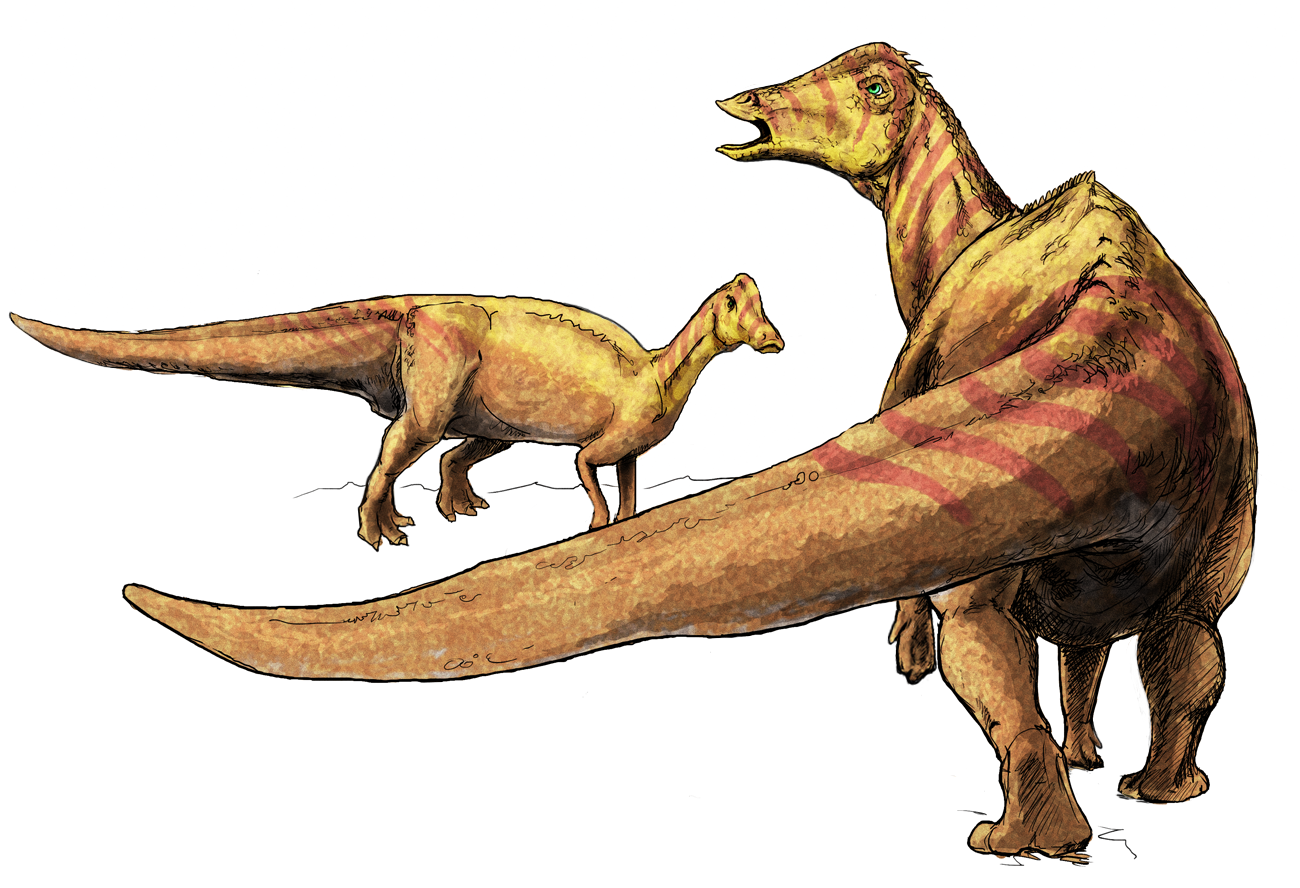
A herbivorous duckbill dinosaur that lived during the Upper Cretaceous Era (85-70 million years ago), Nipponosaurus was discovered in the southern part of Sakhalin Island in 1934, when the territory was still Japanese. It was documented and removed by Japanese scientists. When the island passed to Russia, no more specimens were found. But hope springs eternal!
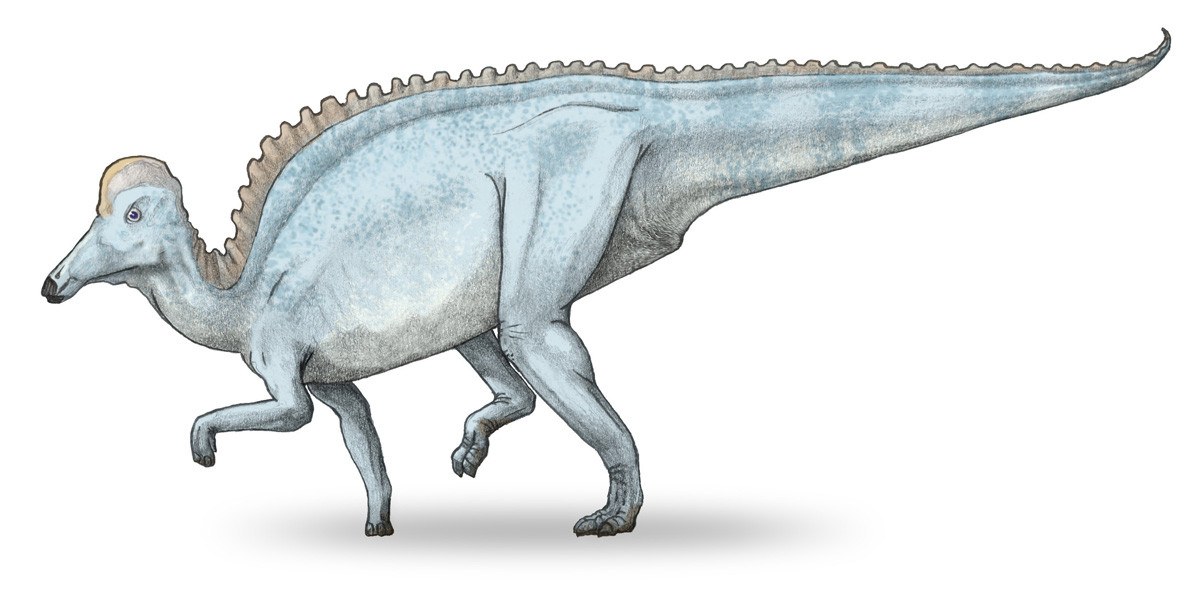
Another duckbill dinosaur that lived on the territory of Russia at around the same time, 70-66 million years ago, was documented in 1991 and given the name Amurosaurus in honor of the Amur River. The first bones of these dinosaurs were discovered by Russian scientists in the early 20th century, but for a long time they struggled to recreate the image of the prehistoric creature. Today it is known to have been a rather large herbivorous dinosaur (3 meters across the top of the shoulders) with a crest on its head and several thousand teeth, enabling it to grind almost any food. What’s more, they even found teeth processed by gastric acid, which means it could swallow its own old teeth!
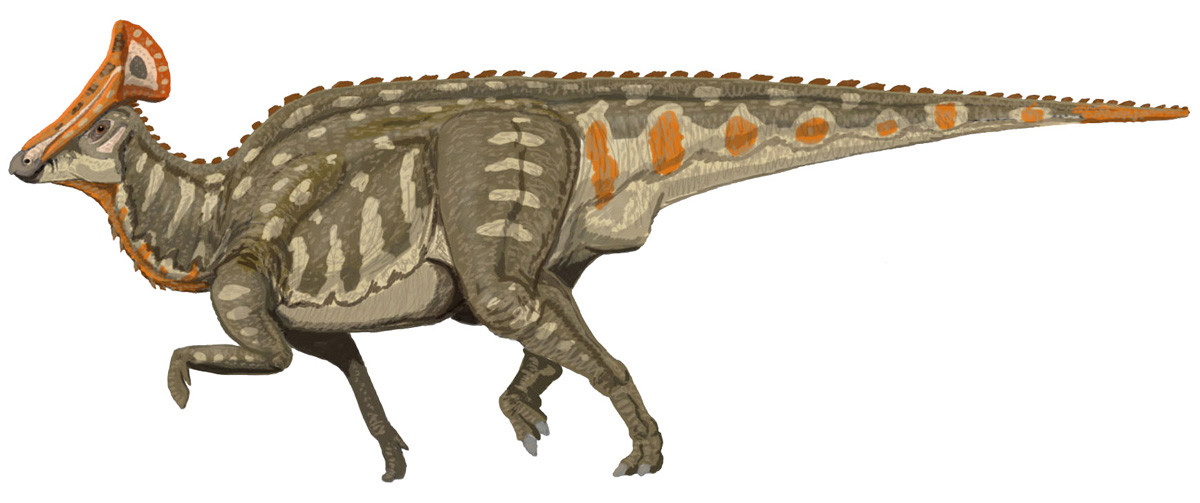
Another large duckbill dinosaur, Olorotitan, was also found in these parts. It could reach 12 meters in length and had a larger hollow nasal crest, which it probably used to make trumpet sounds. Olorotitan fossils were found in 1991, followed by the discovery in 1999 of an almost complete and articulated skeleton, the first such find in Russia.
The herbivorous Kerberosaurus or Cerberosaurus, named after the three-headed guard dog of Hades in Greek mythology, was also found on the banks of the Amur River, on a site dating back 70-66 million years. According to paleontologists, it was a large reptile, about 10 meters long, and despite having no crest, still had various features marking it as a duckbill dinosaur, in particular: a wide beak and plentiful teeth for grinding food.
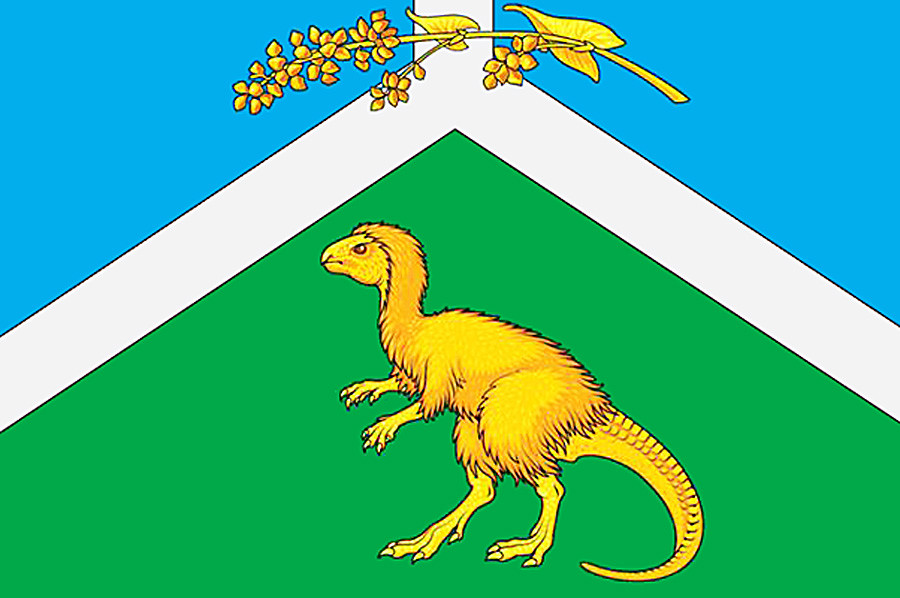
The coat-of-arms of the Chernyshevsky District of the Trans-Baikal Territory
Anna Garcia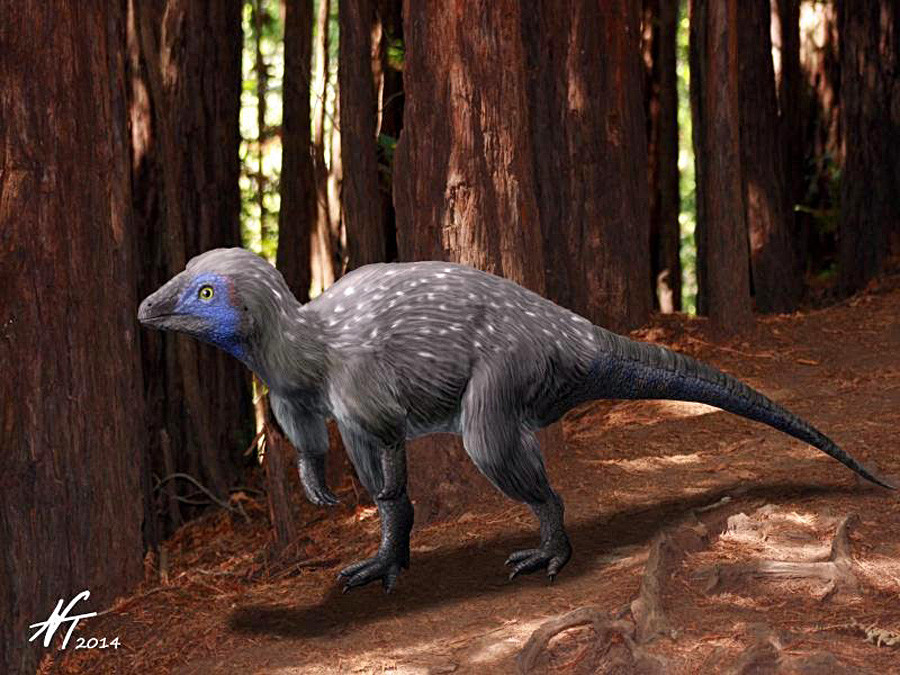
The herbivorous Kulindadromeus lived in the Trans-Baikal Territory about 150 million years ago, and was unearthed by Russian scientists in 2010. The almost complete skeleton with imprints of the skin covering was one of the most sensational finds in Russia. It was a two-legged dinosaur 1.5 meters long and with different skin on different parts of the body, including three types of scales on the hind limbs, tail, head, and chest area, and three types of feathers on the humerus, femur, and shin bones. The find was important not only for science, but for the local administration — the image of the first feathered dinosaur appeared on the coat-of-arms of the Chernyshevsky District of the Trans-Baikal Territory.
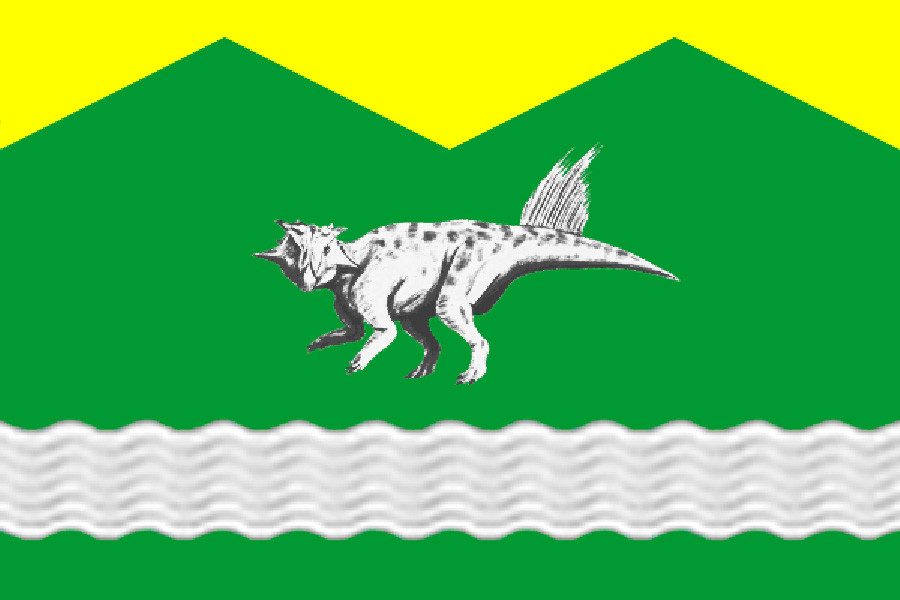
The coat-of-arms of the Chebulinsky District of the Kemerovo Region
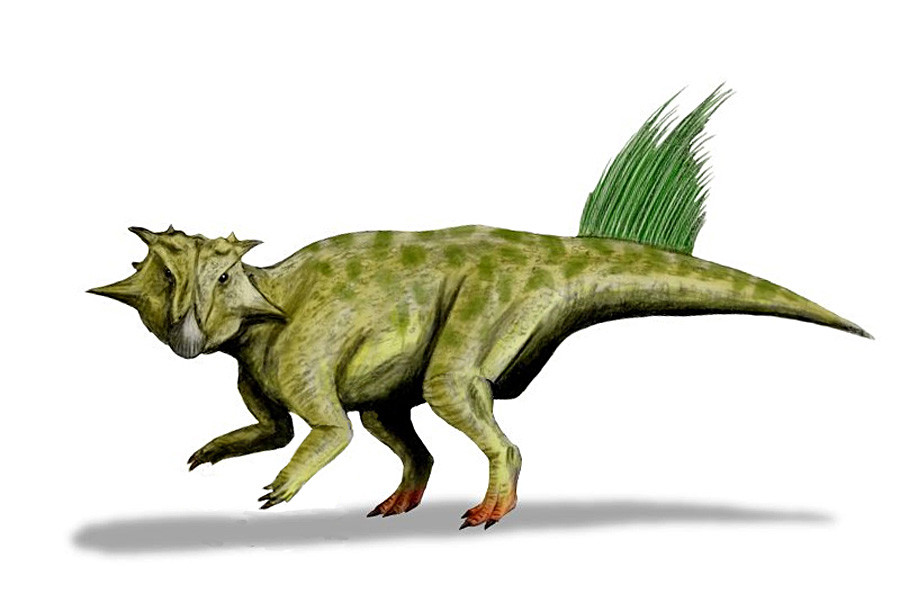
Another dinosaur that became part of a regional coat-of-arms, Psittacosaurus was discovered in Siberia in 1953. A herbivorous dinosaur of the Cretaceous Period (129-113 million years ago), described as the largest representative of its kind, the “Siberian Psittacosaurus” reached up to 185 cm in length and weighed up to 30 kg. It is also known as the “parrot dinosaur” because of its strange appearance: it had a beak, hornlike protuberances, and something resembling spikes or feathers on the tail.
One of the most interesting finds in the Krasnoyarsk Territory, this predatory dinosaur was discovered by local historian and amateur paleontologist Sergei Krasnolutsky near the town of Sharypovo. The dinosaur, which was given the name Kileskus, lived about 168-166 million years ago, and was one of the oldest relatives of the famous Tyrannosaurus Rex. It reached 5-6 meters in length and 1.7 meters in height, and weighed up to 250 kg.
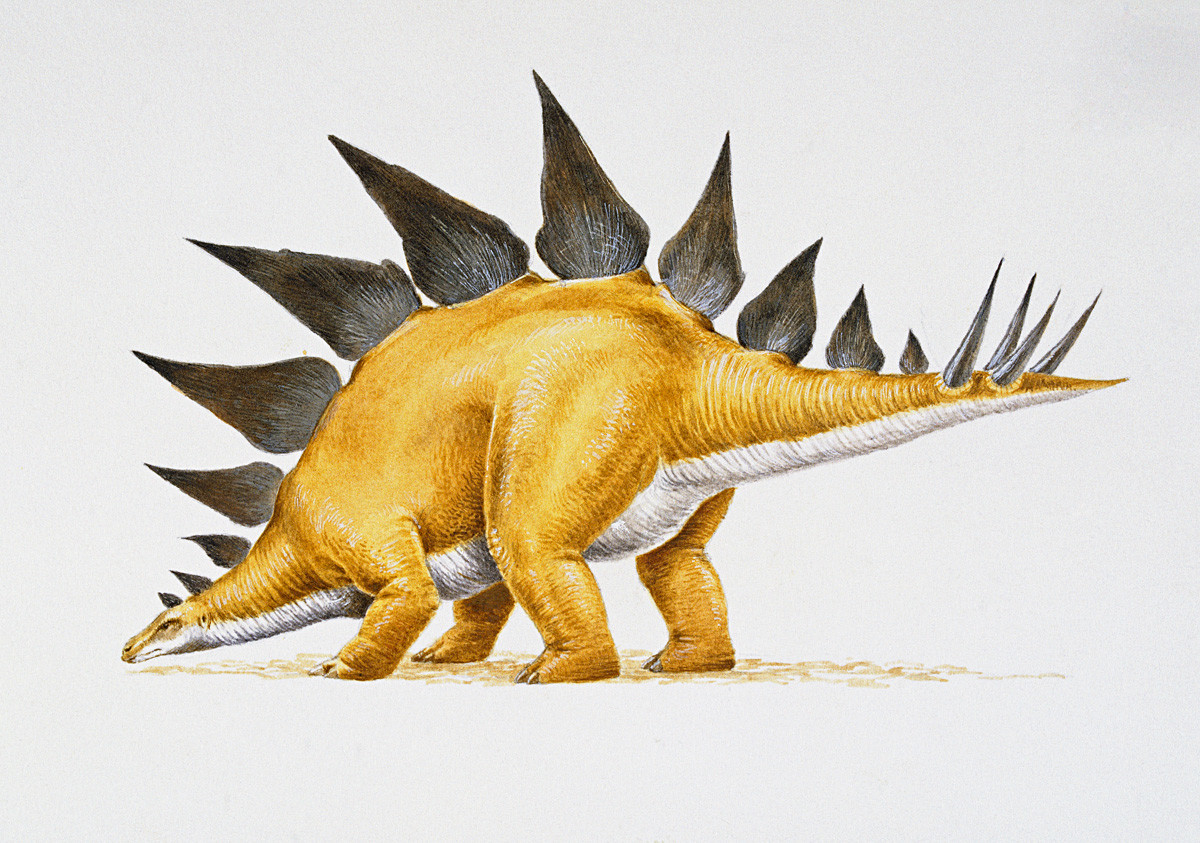
In the same area, Krasnolutsky also found a giant skeleton of a herbivorous Stegosaurus about 175 million years old. This is one of the most complete skeletons ever found in Russia, and the oldest Stegosaurus skeleton in the world. Stegosaurus reached about 4 meters in height and 9 meters in length, and weighed up to 4.5 tons. But its brain weighed a mere 80 grams! However, the Siberian Stegosaurus had smaller dimensions (the size of a cow), and it could have been the progenitor of its later, larger relatives. Stegosaurus specimens were also found at the Teete stream in Yakutia — about 5-6 meters long and weighing around 3-4 tons.
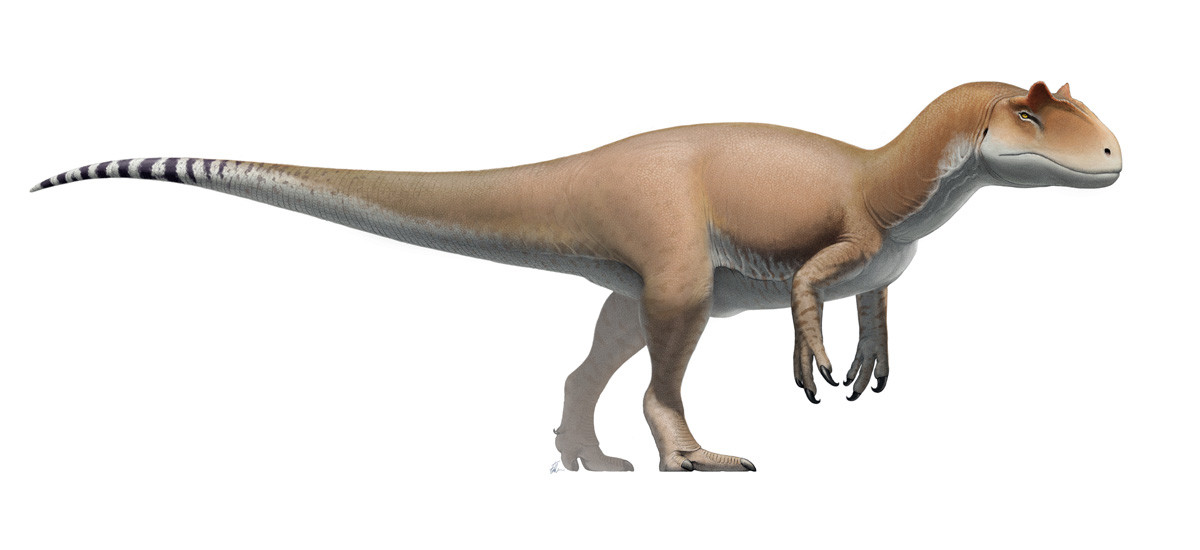
Besides Stegosaurus, the remains of one of the largest predators of the time — Allosaurus — were also found in Yakutia. These creatures reached about 7 meters in length and 2-2.5 meters in height, and weighed one ton. Despite its huge mouth with inward-bent teeth up to 10 cm long, scientists calculated that its bite was weaker than that of a modern lion. Its skull, meanwhile, could withstand a force 15 times as strong as its bite, so Allosaurus effectively used its head like an ax.
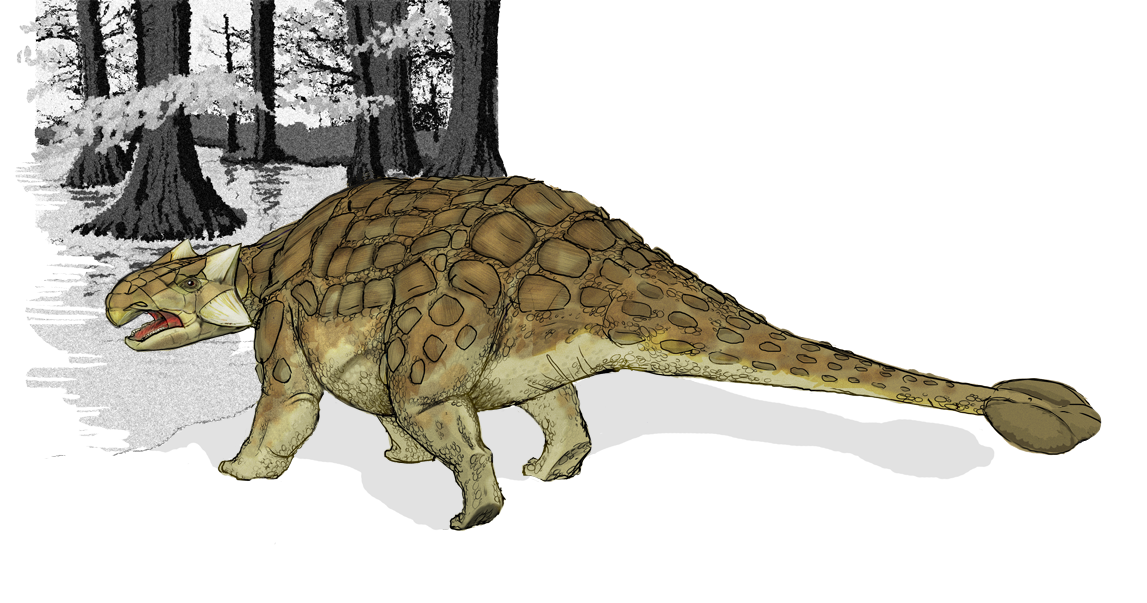
Armored herbivorous Ankylosaurus also inhabited the territory of present-day Yakutia. The remains of this ancient creature, which was approximately 3-4 meters long and 1-1.2 meters high, were found at Teete. It had very small teeth, and its back was partially or completely covered with bony armor. 80 million-year-old Ankylosaurus carapaces were also found in the Volgograd Region. According to scientists, they were impassive animals that lived on the shores of water bodies. They were well-protected from predators and, although heavy, did not sink into swamps thanks to the hooflike structure of the manus.
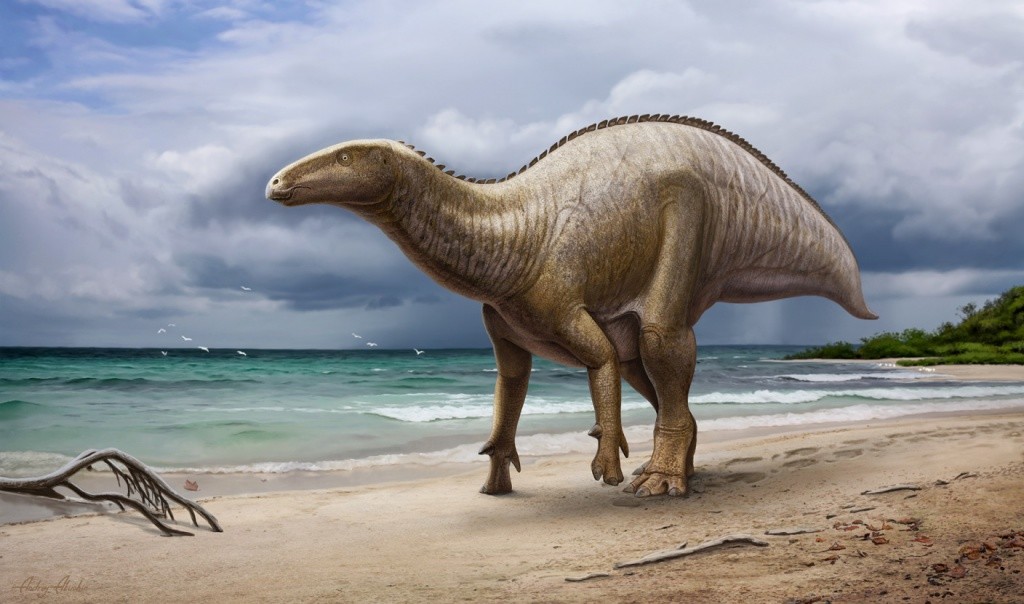
Some of the youngest (geologically speaking) dinosaur finds in Russia were made in Crimea. In 1934, the first dinosaur remains were discovered near the town of Bakhchysarai, and later the famous geologist Anatoly Ryabinin determined that the bones had belonged to an unknown species of duckbill dinosaur that lived 68-66 million years ago. According to scientists, the near-insular Crimea could have been a kind of refuge for Riabininohadros, which had to fight for survival. It was relatively small in size, 2.5 meters tall and up to 7 meters long. This typical herbivorous reptile also liked to graze near freshwater bodies.
Named after Tengri, the chief deity in Mongolian-Turkic mythology, this herbivorous giant of the Cretaceous Period (120-100 million years ago) was documented by Russian scientists in 2017 on the basis of three tail vertebrae. It was the first Russian sauropod to receive a scientific designation. It reached a length of 12 meters and weighed up to 20 tons.
Another sauropod of impressive dimensions, officially recognized only in 2017, Sibirotitan lived on the territory of modern Russia about 120 million years ago. The new reptile was documented thanks to teeth, vertebrae, and a sacrum about half a meter long discovered over a period of time near the village of Shestakovo, Kemerovo Region, at one of Russia’s top dinosaur locations. It was not the largest representative of its group: Sibirotitan had a long, massive tail and an elongated neck, weighed approximately 10 tons, and reached about 12 meters in length from head to the tip of its tail. The four-legged Sibirotitan fed on plants and, due to its imposing size, was rarely attacked by predators.
More recently, at the end of 2018, Russian scientists finished documenting a new dinosaur, the remains of which had lain in the ground on the banks of the Volga River for around 130 million years. Three giant vertebrae had been discovered back in 1982, and several more were found in the same place a few years later, but only recently were scientists able to determine that they belonged to a previously unknown titanosaur. It was designated Volgatitan simbirskiensis, or Volgatitan for short. This giant herbivorous dinosaur with an extended neck and tail lived approximately 65-200 million years ago. True, as scientists note, at 17 tons it was not the heaviest of its prehistoric reptile relatives found on the banks of the Volga.
If using any of Russia Beyond's content, partly or in full, always provide an active hyperlink to the original material.
Subscribe
to our newsletter!
Get the week's best stories straight to your inbox